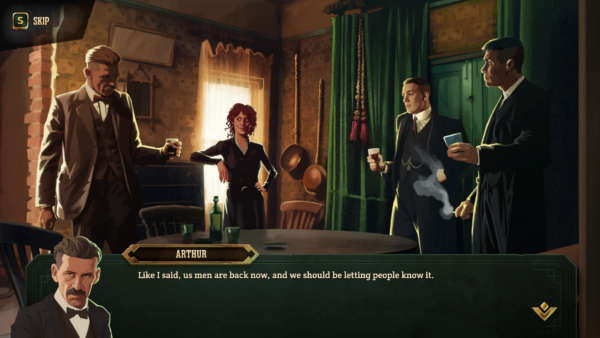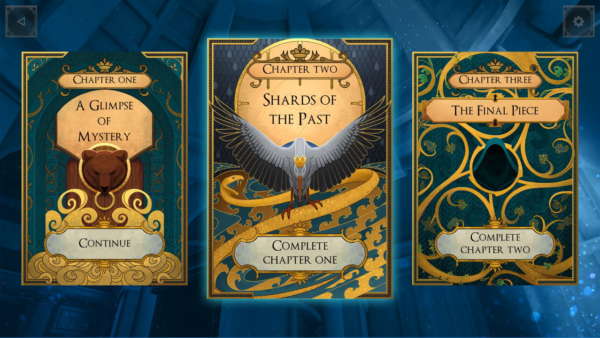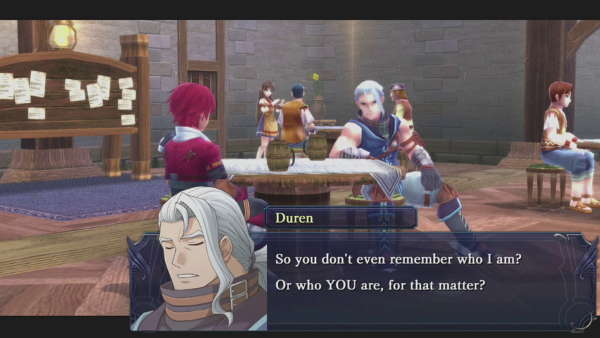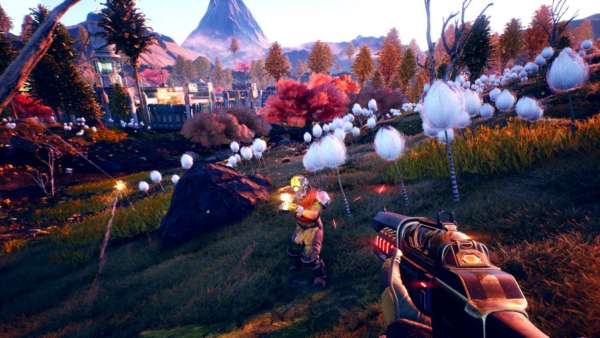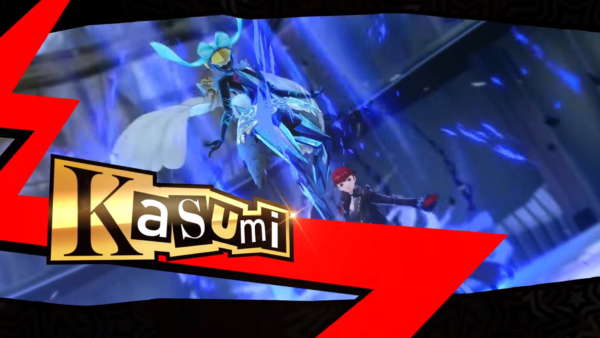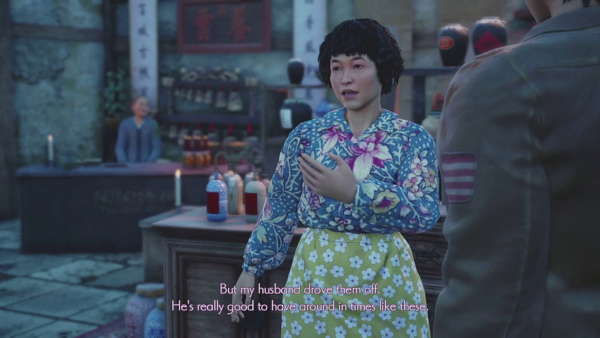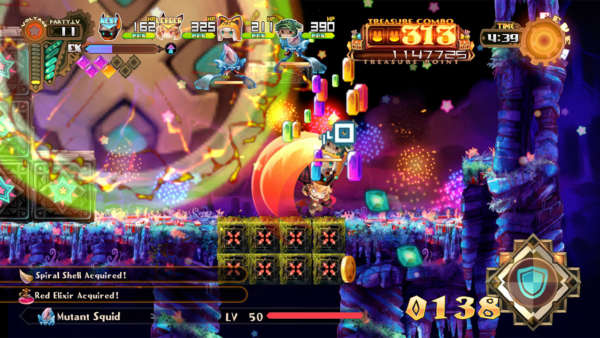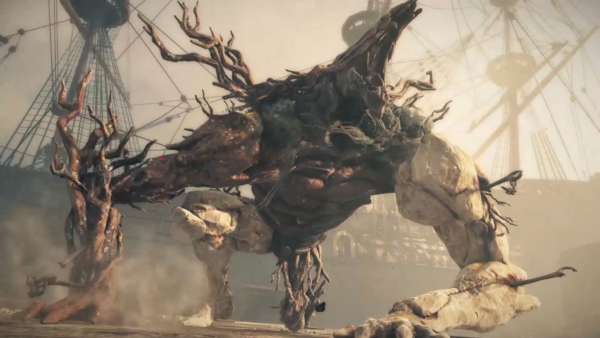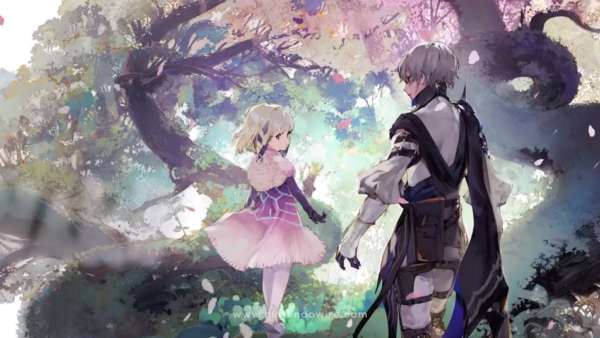How often were we told as kids that friendship makes the world go round? That any number of close personal chums can make anything easier or solve any problem. Now what if you added demons, God’s and other supernatural beings into that idea? Well for one you’d have some weird ideas of friendship similar to the film “The Craft”, but then you would also have 2008’s critical RPG darling Persona 4.
Persona 4 was the PS2’s swansong, being released at a time most players had moved onto the greener grass of “next-gen”. Players had to plug back in their old , dusty machines for one last adventure before relegating the old gal to some forgotten corner, retrieved only for nostalgic purposes. At first it didn’t get much attention outside of certain groups, Atlus weren’t as well known as they are now. As time went by however people looking for an enjoyable console RPG heard about the Persona series which had slowly been gathering momentum since Persona 3. Now half a decade since its original release Persona 4 has been given a PS Vita version. It’s no simple HD port though, but an enhanced remake that refines the originals mechanics and brings new ideas to the already content filled package.
For the uninitiated Persona 4 takes place over the course of a year. The protagonist’s parents have entrusted his uncle to look after him as they work over-seas, so you are moved from the big city to the sleepy countryside town of Inaba. Shortly after falling into a small gang of friends at school people start turning up dead around town with no obvious cause of death. Through a series of increasingly bizarre events the group find they are the only ones who can prevent further murders by entering the otherworldly “Midnight channel”, a world within television. The cast use the power of persona to summon supernatural manifestations from various mythologies to fight the shadows, the personification of humanities hidden desires. The game is steeped heavily in Jungian psychology and the tarot, which the game wears on its sleeve through its use terminology and concepts. It is refreshingly deep as it explores the ideas of the various masks people use to present themselves to the world, without throwing it in the face of the audience in attempts to seem smarter than it is.
The game is split into two interconnected pieces. The midnight channel is a the normal turn-based RPG fare, with a team of four exploring randomly generated floors of a dungeon, battling all manner of imaginative monsters with their own force of persona’s. The system is heavily in favour of those who take the time to abuse enemy weaknesses. If an enemy is hit with their weakness, be it physical or magical, then the character is rewarded by another immediate turn and the enemy is temporarily incapacitated. Incapacitate all the enemies and the chance for an all out attack is given, dealing heavy damage to all foes. An unknown enemy is just as likely to either absorb or reflect an attack as much as be weak to it, so risk versus reward is constantly considered. The system is quick, simple and rewards flexibility in persona set ups by way of giving further rewards at the end of battles won with an all out attack.
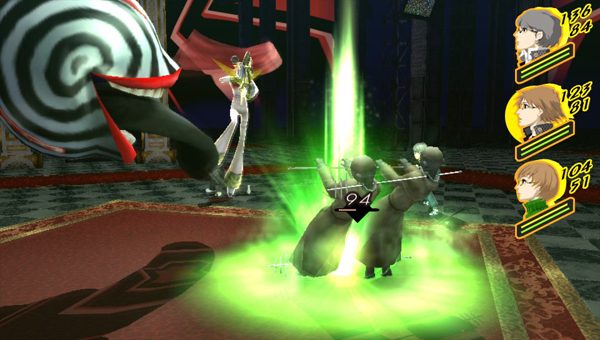
Enemy and Persona design are equal parts imaginative and disturbing
The persona fusion system has been partially redesigned from the original. Instead of mashing collected persona’s to pass on random skills and traits to the off-spring, specific skills are now selectable to pass down from the parent persona. This is further augmented with the use of skill-cards, drops that allow any persona to learn that specific ability. This adds a new layer to the old system which mainly rewarded players who knew how to use the fuse system to gain specific results. It opens up the battle system to further personalisation in team set-ups. This is a much needed boon as the normal difficulty has been stepped up for more of a challenge.
The other half of the game is set within Inaba, going from day to day like any other 16 year old would. Every day is split into the times of day, afternoon and night with most meaningful actions moving time along to the next segment. Join a sports team, go to drama club, hang out with this guy, that girl or maybe just study in the library. Every action has some form of reward in another part of the game, so progress is always being made in one area or another. Spend time with the basketball team and increase your diligence, allowing access to certain part-time jobs, which gain money to buy armour and weapons which increase effectiveness inside the TV.
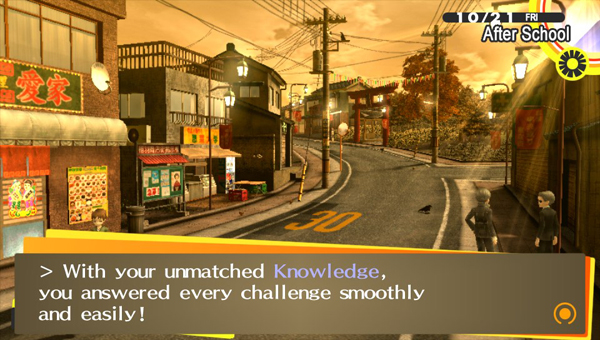
If only life were this easy
A far better reward for spending time with the characters though are the social-links. As time is spent with certain characters social-links are established, and their personal story is progressed. When more time is spent with them the link ranks up, unless they dislike the way they are treated when certain options are present. This effects what happens in the other world as social-links allow access to higher levels of persona, and imbue specific types with experience when created. Playable characters who have social links also gain abilities as they come to like the protagonist more, like the ability to take a blow that would otherwise kill you. Golden includes two new extra social-links in the role of the Jester and Aeon arcana, both of which add significant narrative content for returning fans along with an extended epilogue if certain conditions are met. The new character Marie is an especially interesting enigma as a new denizen of the velvet room who mixes shy introvert with vaguely Gothic misanthrope. More time to socialize has been added to compensate for the added content, such as the ability to sneak out at night. While social links cannot level up at night, it does increase the likelihood of levelling next time you see them. This is crucial to levelling up at later points in the game. It solidifies the core idea that friendship can overcome any obstacle. Cheesy and maybe a little sickening? Perhaps, but the game usually has enough sincerity and self-awareness to pull it off…usually.
Time management is crucial to getting the most out of the game. A ticking clock to save the victim before the fog sets in keeps the action on track and is a reminder that exploration into the midnight channels is paramount. Is it worth increasing those social-links a little more before setting off or is it worth risking it to make up progress later? It is a question that is regularly asked and the game gives enough room to allow differing play styles. The marriage of the usual dungeon-roaming affair to the unusual day to day life of a high-school is a breath of fresh air, in a genre filled with “save-the-world” grandeur.
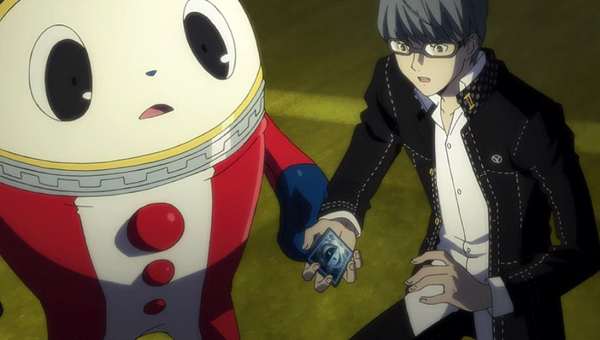
The rare animated cut-scenes are great at setting up dramatic moments and look fantastic
The story itself is largely unchanged from the original. Much of the first play-through is spent going through the well voiced dialogue. The new actors who play Chie and Teddy work with mixed results but the voice acting is generally high across the board. This is needed to imbuing the simple animation and idle-stills that present the characters on screen. While the original committed a near unforgivable sin with a three hour opening sequence with little game-play, Golden remedies this slightly by giving more choice moments of sparse exploration. It is a necessary sin though to introduce the world and the flow of the game, but it’s a bitter pill to swallow. While the opening is still ludicrously long, it is held together by these small changes and the strength of its characters and world. This is not to say it is perfect however. Overly long scenes as funny or endearing as they can be stay past their welcome. There is also serious case of the audience being more intelligent than the characters as the team attempt to solve the mystery of the midnight channel, figuring out plot points hours before they take a hint. While it can be entertaining, it feels like some of the fat could have been cut to make it a tighter experience.
The graphics of the PS2 era have been given a good bit of spit and polish. The Vita’s increased resolution allows finer details to be picked out of the environment, rather than the slightly muddy backgrounds of old. Little details like an animated aquarium scatter the backgrounds that help Inaba come alive on the small screen. The persona and enemies have been given the largest overhaul with more definition and higher quality animation. The dungeon environments are still rather simple though as the corridors of the one level blend into another. While this can be expected of randomly generated levels, additional elements to break up the monotony of ten identical floors would have been a welcome addition.
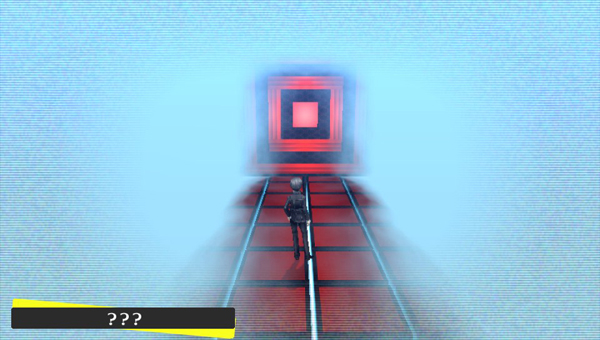
Thankfully, they get a bit more complex than this
J-pop beats make up the majority of the almost irritatingly upbeat soundtrack. Tracks change with the weather and location so no one track overstays its welcome, and expect to hum the melody of certain tracks such as the delightful over-arcing theme of “reach out to the truth”. The new tracks can be jarring however, with some of the tracks taken from the animé series. These songs have higher production values and their tone can seem a little unfit when juxtaposed to the action on scree. This is not to say they are bad, just a little out of place from the rest of the catchy and varied soundtrack that is otherwise very entertaining.
Many other new features come packed into an already dense game. They include an online SOS system where players send message to other players asking for aid, a completely changed “shuffle” system that adds an additional risk/reward element and other smaller changes that add up to make the game a better experience. Gardening and the ability to travel further-a-field via moped are eventually given for additional rewards also make an appearance. The TV overlay menu comes with a load of extra content, including the soundtrack in concert and an exploration of the games running themes and influences. Atlus has clearly been listening to its fans about what they wanted to see in the game, as well as adding a few new ideas of their own.
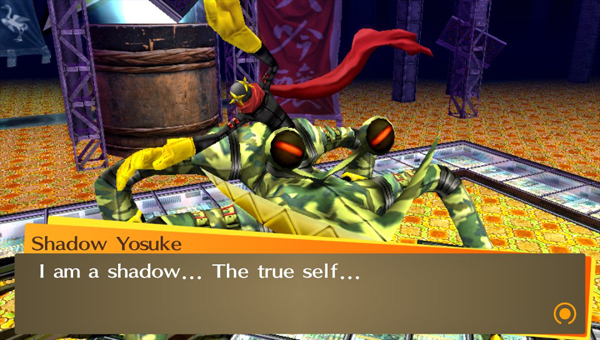
Told you it got weirder
The Playstation Vita has had a lack of any meaningful time sinks to pull people into using the system. Persona 4 Golden attempts to change this by taking one of the most loved RPG’s of recent memory and giving it a flashier coat of paint and new content. Giving most of the systems a slight revamp, while keeping it familiar to returning players improves on an already fantastic experience. The pace of the game fits well in the hand-held space even if the story drags its heels in places. Putting in a few battles or days at school in a ten minute burst perfectly suits the rapid nature of the game. Those minutes will also rarely be spent doing nothing of importance as everything ties together to make the protagonist stronger. The unique setting and the air of mystery that pervades Inaba is worth the time of any RPG fan. It’s a great purchase for anyone interested in an RPG that doesn’t involve defeating an planet threatening menace or anyone who is looking for an excuse to use there PS Vita again.
